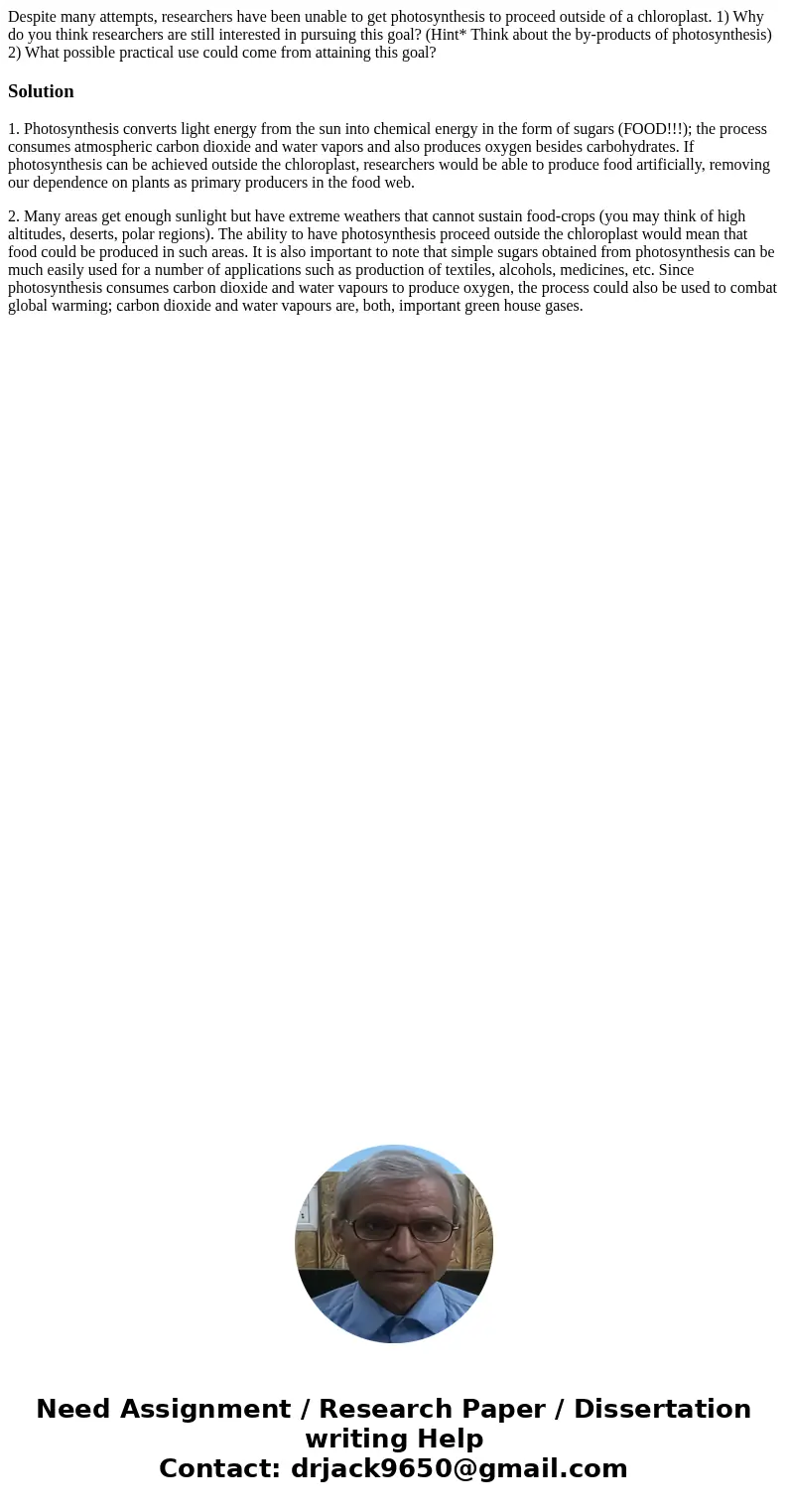Despite many attempts researchers have been unable to get ph
Despite many attempts, researchers have been unable to get photosynthesis to proceed outside of a chloroplast. 1) Why do you think researchers are still interested in pursuing this goal? (Hint* Think about the by-products of photosynthesis) 2) What possible practical use could come from attaining this goal?
Solution
1. Photosynthesis converts light energy from the sun into chemical energy in the form of sugars (FOOD!!!); the process consumes atmospheric carbon dioxide and water vapors and also produces oxygen besides carbohydrates. If photosynthesis can be achieved outside the chloroplast, researchers would be able to produce food artificially, removing our dependence on plants as primary producers in the food web.
2. Many areas get enough sunlight but have extreme weathers that cannot sustain food-crops (you may think of high altitudes, deserts, polar regions). The ability to have photosynthesis proceed outside the chloroplast would mean that food could be produced in such areas. It is also important to note that simple sugars obtained from photosynthesis can be much easily used for a number of applications such as production of textiles, alcohols, medicines, etc. Since photosynthesis consumes carbon dioxide and water vapours to produce oxygen, the process could also be used to combat global warming; carbon dioxide and water vapours are, both, important green house gases.

 Homework Sourse
Homework Sourse